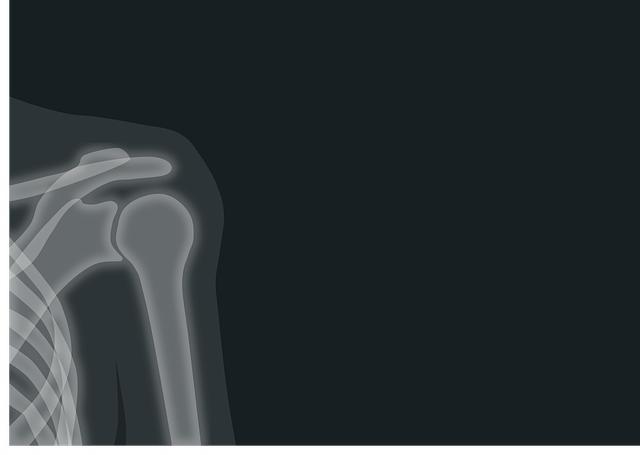Blog
Addressing Shoulder Pain in Houston
Take a moment to appreciate your shoulder joints, some of the most active in your body.
When most people say or think, “shoulder,” they are referring to the glenohumeral joint, which allows for interface between the scapula and the head of the humerus; this ball and socket joint interacts with three other joints to make up the shoulder complex. Along with these joints is an army of muscle, tissue and ligaments which add stability and strength to the shoulder. When you take a moment to think about all the motions you put your shoulders through on a daily basis it becomes clear: we use our shoulders for everything. We should therefore place store by keeping our shoulders in good health.
Shoulder instability
Because the shoulder involves so many moving parts and sensitive tissues, and because we move it so much, this joint is particularly prone to injury. Shoulder instability refers to some form of dysfunction between all the working parts of the shoulder; the clearest example of this is when the ball partially or fully separates from the socket in the joint, known as subluxation (partial) or dislocation (full). Shoulder instability is the direct cause for many symptoms involving pain and loss of motion.
Chiropractic for shoulder pain in Houston
If you have been feeling tenderness and limitations in motion in your shoulder joint, it is important to get a clear diagnosis of the cause. At our office in Houston, we begin with a thorough physical assessment and medical history to get an accurate diagnosis of your shoulder pain. We utilize chiropractic techniques such as adjustment and mobilization to maintain spinal alignment and ensure proper nerve signalling to the shoulder. We can then help to strengthen the muscles and tendons which surround the joint in order to prevent any injury from recurring. If you are suffering from shoulder pain, wait no longer to get an accurate diagnosis by calling our office in Houston today.
The Mystery of Myofascial Pain
Myofascial pain: what is it and why do I not want it?
At its core, myofascial pain is a chronic, pain-causing condition that affects the body’s soft tissues. The fascia is a layer of tissue that covers our muscles and spreads without interruption throughout our bodies. When this tissue is injured, whether acutely or by repetitive trauma, it often tightens and contracts. This can put pressure where you don’t want it: on nerves, muscles and organs. The point where the injury occurs is often the epicenter of pain, and we refer to it as the trigger point; but other, seemingly completely unrelated, areas of your body can experience pain in what is known as referred pain. Because the fascia spreads throughout our bodies without interruption, pain can be experienced far away from the source of the injury.
Chiropractic has many techniques for dealing with myofascial pain in Houston
Trigger points can be detected because, rather than being a source of scar tissue that develops after injury, they are areas of increased sensitivity in the muscle. When pressure is applied here, pain is often felt in an unrelated area, hence the referred pain and hence the necessity for determining the true point of injury. After diagnosing your trigger points, we move on to treatment which includes:
- Myofascial release
- Active Release Technique
- Heat and ice
- Electric muscle stimulation and ultrasound
By applying manual pressure to the trigger points, we encourage the muscles to relax and the trigger point to disappear. Specific exercises relating to stretching and strengthening can be used at home to improve your symptoms from myofascial pain.
Treat your myofascial pain and release trigger points in Houston
Because myofascial pain is undetectable through x-ray, MRI and CT scanning, it is most often determined through medical history and physical examination. We use our hands to find whether trigger points in your muscle are the true source of your pain. From here, we move forward with a plan for treatment. If you are interested in finding out more about how we help you treat your myofascial pain in Houston, give our office a call to schedule an appointment today.
Frozen Shoulder in Houston
Finding A Life with Arthritis in Houston
Arthritis is widespread throughout America
While the term arthritis incorporates multiple conditions, the pain at one end of the spectrum can be so severe that simple tasks are rendered impossible. The two major subsets of arthritis are:
- Osteoarthritis: a degenerative disorder, mostly found in elderly populations, which breaks down cartilage from the joints and causes them to rub against each other, creating pain and limiting movement. Spinal osteoarthritis involves the spine’s facet joints.
- Rheumatoid arthritis: an autoimmune disorder that involves inflammation of the joint tissues, causes pain, lowers red blood cells and reduces range of motion. While RA is not considered hereditary, a family history of RA is linked to increasing your risk for the disease.
- In both cases, the body will attempt to replace the lost cartilage by creating extra bone known as osteophytes, or bone spurs, in the joint space.
In America, as many as 8 in 10 adults over the age of 55 will suffer from arthritis
Everyone is affected differently and in different parts of the body. But what all arthritis sufferers share is an impingement on their lifestyle. At Holmes Chiropractic, we are ready to help you manage your condition and mitigate many of its worst symptoms!
Finding relief from arthritis in Houston
At our office in Houston, we have years of expertise detecting and treating conditions such as rheumatoid arthritis and osteoarthritis; because they are primarily musculoskeletal problems involving the degeneration of joint spaces, there are many options available to people who suffer from arthritis. Through chiropractic adjustment, attention to exercise and arthritis-appropriate activities, you can find a way to live with your condition! We can help you live a life with less pain, better range of motion and more strength despite your condition; give our office in Houston a call to schedule an appointment today!
Banish Back Spasms in Houston
Breaking down a back spasm
A back spasm is an episode of uncontrollable tightening of a muscle. By nature they are sudden and involuntary and are often brought on by strain and overuse or as a symptom of an injury or disorder. Heavy lifting, for example, is a common cause of back spasms because it is an activity that loads excessive strain to the ligaments and muscles in the lower back.
Back spasms are a symptom
Back spasms are often caused by irritation to nerves which lead in and out of the spinal cord; a compression of the nerve root can cause sharp pain, or spasm, as the body attempts to send a signal that will prevent motion to stop further harm. The spasm is trying to protect you from causing further injury. When a patient complains of back spasms, there are several “usual suspects,” to check for, including:
- Arthritis
- Muscle or ligament damage
- Ruptured disc
- Degenerative disc disease
- Disc herniation
- Weak core muscles
- Other acute injuries
How we treat back spasms at Holmes Chiropractic
At our office in Houston, we seek to heal the condition that is causing your muscle spasms. In turn, this will allow you to return to a normal range of motion and encourage the healing process further. If a misalignment of the spine is causing undue compression to the nerve, we correct this situation with chiropractic adjustment and then work on strengthening key muscles surrounding the injury; strength of the surrounding muscles is a key way to prevent the injury from recurring. Give our office a call to schedule an appointment and stop your muscle spasms today!
Avoiding the Dreaded Running Injury
Why are running injuries so prevalent?
Running is a seemingly innocuous activity, but as many as 1 in 2 runners will incur an injury in a given year. The jarring nature of the sport does take its toll on our joints but a significant amount of injuries can be avoided by applying proper technique and common sense. A large part of the problem begins with a lack of variety: if you are doing the same run every day you are going to create a surplus of stress on certain parts of the body while other parts will suffer from lack of use. Mix up your running routine and try these other tips to keep yourself injury free:
Protect your body while running
- Running surfaces: to combat the monotony and degradation that results from running on concrete, try running on other less abrasive surfaces.
- Pace yourself to determine your ideal cadence: How many times does each foot strike the ground? Optimal cadence is often found around 180 steps (per foot) per minute.
- Adjust when over-striding: A long stride means you strike the ground ahead of your body with your heel. Try to land each step underneath your hips. This is a more efficient way of running that will help distribute forces evenly, contribute to better posture and keep you going for longer.
Chiropractic contributes to good mechanics when running
Posture is another important aspect of running, with an emphasis placed on staying upright, no matter how tired you are. At Holmes Chiropractic, we have years of experience helping runners overcome pain and get back on track. Whether you are nursing an acute injury or looking to improve your body mechanics and become a more efficient runner with less chance of injury, give our office in Houston a call to schedule an appointment today.
Is your Office Chair Killing You Slowly?
Office chairs (for the most part) are bad for your health
The life of a desk worker is not filled with the perils of, say, a 49th floor window cleaner, but the hazards inherent with desk work are more insidious. But the good news is that as a culture we are now aware of the side effects of sitting all the time. For people who suffer from already existing back pain, the office chair can almost seem like a torture device, so we’ve brainstormed some ways to make your time on the job a little less painful.
An office chair survival guide
- Consult our good sitting posture guide here
- Perform posture checks all the time (whenever the thought strikes you). Wiggle your shoulders and reset posture regularly.
- Support your lower back: with a cushion or a rolled up jacket- any material will do to add support to your lumbar region.
- Use a headset: if you conduct a lot of work on the telephone, consider using a headset to encourage you to stay sitting upright.
- Schedule your breaks: write them down, set an alarm in your phone and obey!
To actually combat pain in your office chair:
- Alternate ice packs and heat
- Massage yourself: sit up straight, arch your back and apply gentle pressure to areas that feel sore.
- Perform back stretches: many of which can be done without moving, or subtly while you continue working.
- Don’t neglect your hamstrings: hamstrings tighten as you sit and create a pull on the lower back.
At our office in Houston, we are on the front line in the fight against the damage wreaked by office chairs and a sit-heavy lifestyle. Give our office a call to start healing your pain at the root of the condition today.
Dr. Randall Holmes, D.C.
The Forgotten Few: Muscles of the Lower Back
Muscles of the lower back don’t come in for enough attention
Instead, we focus on building mirror muscles such as the abdomen, biceps, and triceps that enhance our appearance. And while looking great is a key to feeling great, lasting health comes from developing the muscles that matter to keep you upright and pain-free as you age. One of the ways we can do this is by devoting a bit of time out of each visit to the gym to the soft tissues supporting the spine.
The muscles of the lower back
There is a complex network of muscles that provide a vital service for your back: by holding the body upright, supporting the spine, making good posture easier, and allowing your body to move in many directions without incurring injury. These are the extensor, flexor and oblique muscles of the core and lower back.
- Extensors: attach to the back of the spine, provide support for the spine and allow for motions such as lifting.
- Flexors: muscles like the abdominals, which attach to the front of the spine, allow for range of motion including bending and arching the lower back.
- Obliques: attach to the sides of the spine, these muscles allow for rotation of the spine and provide support for maintaining good posture.
Unfortunately, these muscles come in for bad publicity because their weakness is a key contributor to back pain.
Strengthening the muscles of the lower back in Houston
At Holmes Chiropractic, we have a plan to develop and maintain the strength of the core and soft tissues that surround your spine. By focusing on strengthening and stretching, we can make inroads toward solving pain and preventing surgery. We’re not saying you should stop working out the mirror muscles, but by paying equal attention to the muscles of the lower back, you can ensure that your body is well-equipped to handle the extra load that new muscle will bring on. Give our office in Houston a call to schedule an appointment today.
Dr. Randall Holmes, D.C.
The Forgotten Few: Muscles that Matter
Are you forgetting to train important muscle groups?
More importantly, what are you foregoing when you don’t train them? All your muscles need to be moved occasionally but some are more important than others. As an office of chiropractic, we see people who go to the weight room three times a week and never target certain muscle groups that make a big difference in stability of the back. Developing these muscles can not only help you prevent pain, but also certain spinal conditions, and they will make you look great as well!
The forgotten muscle groups
- The neck: there are many muscles in our neck alone. This makes it a densely packed trunk that is susceptible to stiffness and soreness. Exercising the neck and stretching it regularly helps to counteract the stiffness and pain that comes with sitting at a desk all day. Verdict: strengthening your neck will prevent a lot of stiffness and make an upright posture easier.
- The lower back: strengthening these muscles is perhaps the most important for people who suffer back pain. With more strength in the lower back muscles, there is less burden on the vertebrae and they also act as a stabilizing force. Verdict: strengthening this region will help you experience less back pain and mitigate the everyday load we put on our lower vertebrae.
- Obliques: these are the most neglected muscles in the core region, which is unfortunate because they contribute to range of motion in the rotating, twisting and side bending department. Verdict: strengthening the obliques completes your core workout and prevents injury from everyday motions such as looking over your shoulder.
- The traps: these rarely come in for attention unless they are stiff. This is unfortunate because the trapezius stabilizes your shoulders, helps to perform overhead rotation of the arms. Outcome: strengthening and stretching this region can help defeat shoulder and upper back stiffness that comes from sitting at your desk for too long.
Now is the time to start working out these muscle groups
Dedicating even one session a week to these groups can help to round out your muscle building schedule and give the crucial regions of your body some extra support. If you need help identifying parts of your exercise routine which might be leaving you short, give our office in Houston a call. We can help you mitigate pain in your back and focus on ways to strengthen the muscles that matter for keeping pain out of your life completely!
Dr. Randall Holmes, D.C.
How to Become a Deep Sleeper
Are you awakened by the slightest sounds?
Light sleepers are at the mercy of factors both internal and external that serve to prevent them from getting a deep, restful night’s sleep. Sleeping is an individual struggle and light sleepers often feel themselves at the mercy of sounds. While genetics and the possibility for a sleep disorder certainly play a role, there are lifestyle choices that you can exercise control over to help yourself get a better night’s rest.
Why do you want to sleep deeper?
Here are just a handful of ways that getting a full night’s rest benefits you:
- Immune function
- Energy levels throughout the day
- Sleep helps to balance the onset of anxiety and depression
- Metabolism is regulated
- Memory is improved
How to start sleeping more soundly in the city of Houston
With all these benefits in mind, here are some ways you can start impacting your sleep in a positive manner today:
- White noise: to help you fall asleep and normalize the excess sounds.
- Melatonin: a natural chemical produced by the brain, it is also sold over-the-counter in most pharmacies to help effect the onset of sleep.
- Magnesium and calcium supplements: both have been found effective for the treatment of insomnia.
- A cool and dark sleeping environment: while you should feel free to get cozy underneath the blankets, keep the ambient temperature cool and as little light as possible.
- Keep a regular sleep schedule: aiming to get to bed at the same time every night is a boon for the rhythm that your body seeks when trying to sleep.
And a few things to avoid when trying to sleep deeply…
- Electronics before bed: the blue light of the screen interferes with feeling tired.
- Limit caffeine: caffeine takes hours to leave the body- if you have your last cup at 4 p.m., caffeine can still be active in your system at midnight.
- Booze before bed: alcohol may help you pass out, but you will not get restful sleep. And chances are that once your blood alcohol level lowers and the effects wear off, you may just wake up.
Pain is another limiting factor when it comes to sleep- if you are struggling with long standing pain related to a spinal condition, give our office in Houston a call to schedule an appointment so we can detect the root of your pain and set a course for treatment. It’s time we start getting you the rest you deserve.
Dr. Randall Holmes, D.C.









